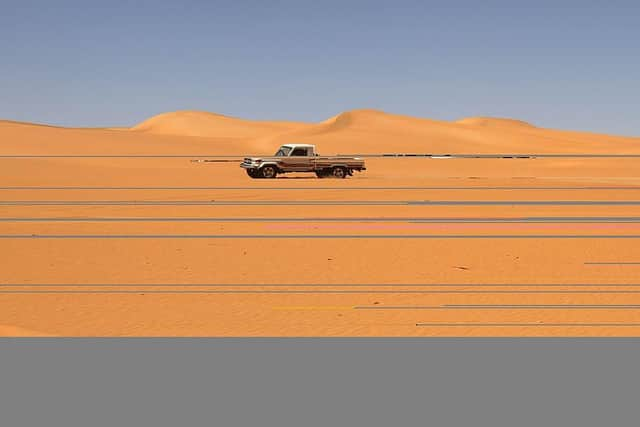UN watchdog: 2.5 tonnes of uranium missing from site in southern Libya
The IAEA said it had found the metal was missing during an inspection of a site in Libya, which had posed “complex logistics” to access – after being postponed from last year due to security concerns.
Each tonne of natural uranium could be refined to 12lb of weapons-grade material if used by a group with the means and resources to do so. However, it can not immediately be used for energy production or weapons as it needs to be converted through a complex process into a gas and spun in centrifuges to reach the levels needed.
Advertisement
Hide AdAdvertisement
Hide AdThe Vienna-based International Atomic Energy Agency said its director-general, Rafael Mariano Grossi, informed member states on Wednesday about the missing uranium.


He said inspectors on Tuesday found that 10 drums containing uranium ore concentrate “were not present as previously declared”.
He added: “Further activities will be conducted by the agency to clarify the circumstances of the removal of the nuclear material and its current location.”
The IAEA declined to offer more details on the missing uranium, but its acknowledgement that the metal went missing at a “previously declared site” narrows the possibilities.
One such site is Sabha, 410 miles south east of Libya’s capital Tripoli, in the country’s lawless southern reaches of the Sahara Desert.
Under dictator Muammar Gaddafi, Libya stored thousands of barrels of so-called yellowcake uranium there for a once-planned conversion facility that was never built in his decades-long secret weapons programme. Estimates put the Libyan stockpile at 1,000 metric tons of yellowcake uranium under Gaddafi, who declared his nascent nuclear weapons programme to the world in 2003 to after the US-led invasion of Iraq.
While inspectors removed the last of the enriched uranium from Libya in 2009, the yellowcake remained behind, with the UN in 2013 estimating 6,400 barrels were stored at Sabha.
American officials had worried that Iran could try to purchase the uranium from Libya, something Gaddafi’s top civilian nuclear official tried to reassure the US about, according to a 2009 diplomatic cable published by WikiLeaks.
Advertisement
Hide AdAdvertisement
Hide Ad“Stressing that Libya viewed the question as primarily a commercial one, (the official) noted that prices for uranium yellowcake on the world market had been increasing, and that Libya wanted to maximise its profit by properly timing the sale of its stockpile,” then-ambassador Gene A Cretz wrote.
However, the 2011 Arab Spring saw rebels topple Gaddafi and ultimately kill him. Sabha grew increasingly lawless, with African migrants crossing Libya saying some had been sold as slaves in the city, the UN reported.
In recent years, Sabha has largely been under the control of the self-styled Libyan National Army, headed by Khalifa Hifter. The general, who is widely believed to have worked with the CIA during his time in exile during Gaddafi’s era, has been battling for control of Libya against a Tripoli-based government.
Gaddafi admitted 20 years ago that his country was responsible for the bombing of a PanAm flight over the Scottish town of Lockerbie in 1988, killing 270 people. However, he never admitted to personally ordering the attack, despite claims from senior Libyan officials that he had done so.
Comments
Want to join the conversation? Please or to comment on this article.